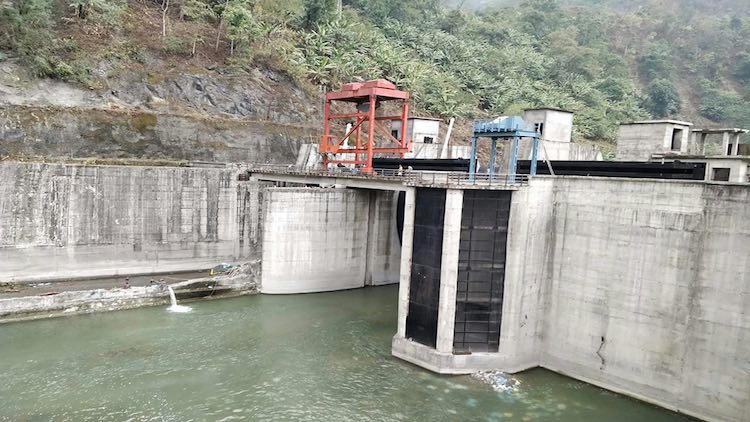Arunachal Pradesh Poised To Restart Dam Building Spree After COVID-19 Lockdown Is Lifted

Rishika Pardikar/thethirdpole.net
In the north-eastern corner of India, the Himalayan state of Arunachal Pradesh was all set to resume its hydropower project building spree when the Covid-19 pandemic arrived and the country went into lockdown. With Chief Minister Pema Khandu issuing a warning to anyone opposing any dam building, work may well start as soon as the lockdown is lifted and construction resumed.
Khandu said on February 11 that the state has the capacity to produce over 70,000 MW of hydropower “if all resources are developed properly.” In the same speech, the Chief Minister – who is from the same Bharatiya Janata Party that is in power at the centre – described any opposition to development projects as “anti-national”, and warned that he had already instructed the intelligence bureau to act against any official found “misguiding” people. On the same day, Deputy Chief Minister Chowna Mein held a meeting with hydropower developers and members of the state government’s hydropower department “to understand the issues hampering implementation of allotted projects.” He noted that the state is committed to provide assistance to hydropower investors and directed the commissioners working on hydropower to provide necessary cooperation. Another indication that dam building will soon restart in earnest was India’s central Ministry of Environment, Forests and Climate Change (MoEFCC) giving the 2,880 MW Dibang hydro project Stage II approval for forest clearance despite strong opposition by locals. With this approval, the state government can issue an order to change the classification of designated forest land and divert it for the project. Khandu said in his February 11 speech that he had persuaded locals to withdraw their opposition. There are two hydropower projects under construction in Arunachal Pradesh now, the 600 MW Kameng project on the Bichom and Tenga rivers, and the 2,000 MW Subansiri Lower Hydroelectricity Project. All three rivers are tributaries of the Brahmaputra. According to details collated from the MoEFCC website, currently 169 hydropower projects are proposed to be built in Arunachal Pradesh. The number excludes 20 projects that are proposed to be dropped. The projects are located across the basins of rivers like Tawang, Kameng, Subansiri, Siang, Dibang, Lohit and others, all in the basin of the transboundary Brahmaputra river.
Khandu said on February 11 that the state has the capacity to produce over 70,000 MW of hydropower “if all resources are developed properly.” In the same speech, the Chief Minister – who is from the same Bharatiya Janata Party that is in power at the centre – described any opposition to development projects as “anti-national”, and warned that he had already instructed the intelligence bureau to act against any official found “misguiding” people. On the same day, Deputy Chief Minister Chowna Mein held a meeting with hydropower developers and members of the state government’s hydropower department “to understand the issues hampering implementation of allotted projects.” He noted that the state is committed to provide assistance to hydropower investors and directed the commissioners working on hydropower to provide necessary cooperation. Another indication that dam building will soon restart in earnest was India’s central Ministry of Environment, Forests and Climate Change (MoEFCC) giving the 2,880 MW Dibang hydro project Stage II approval for forest clearance despite strong opposition by locals. With this approval, the state government can issue an order to change the classification of designated forest land and divert it for the project. Khandu said in his February 11 speech that he had persuaded locals to withdraw their opposition. There are two hydropower projects under construction in Arunachal Pradesh now, the 600 MW Kameng project on the Bichom and Tenga rivers, and the 2,000 MW Subansiri Lower Hydroelectricity Project. All three rivers are tributaries of the Brahmaputra. According to details collated from the MoEFCC website, currently 169 hydropower projects are proposed to be built in Arunachal Pradesh. The number excludes 20 projects that are proposed to be dropped. The projects are located across the basins of rivers like Tawang, Kameng, Subansiri, Siang, Dibang, Lohit and others, all in the basin of the transboundary Brahmaputra river.

Latest Videos
















